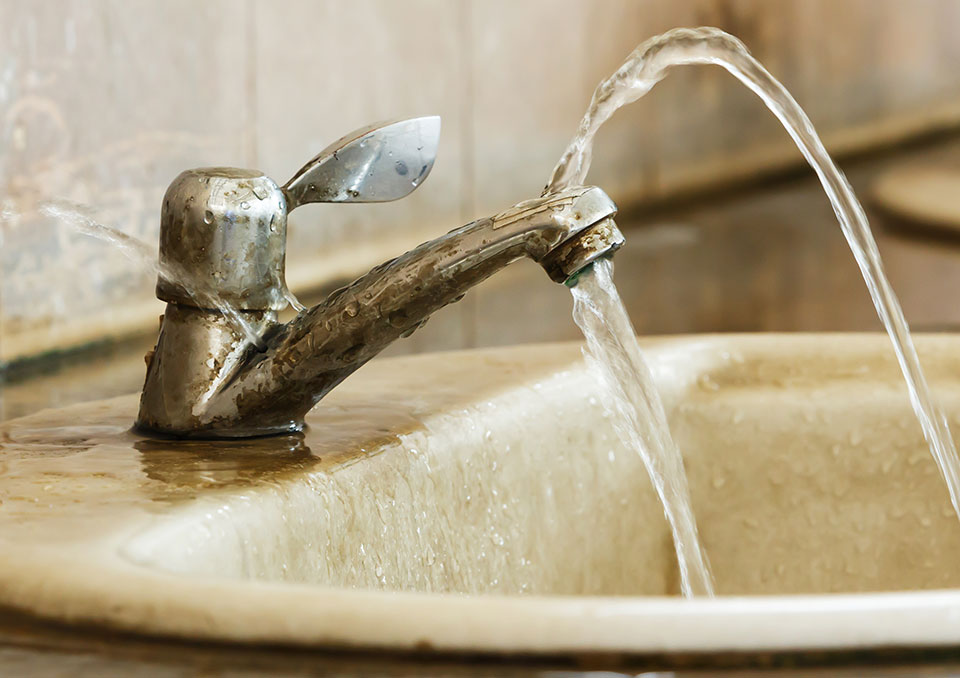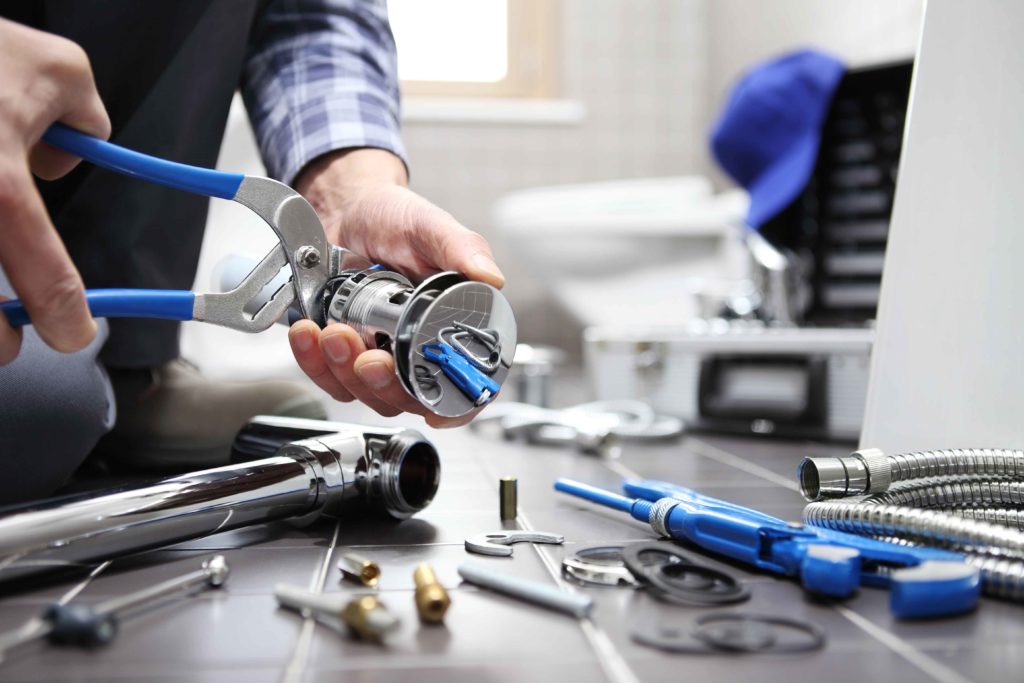Uncovering the Significance of Dealing with a Malfunctioning Faucet
Uncovering the Significance of Dealing with a Malfunctioning Faucet
Blog Article
What're your beliefs about 4 Common Reasons for a Leaky Faucet?

Leaking faucets might seem like a small aggravation, however their effect goes beyond simply the nuisance of the sound. From drainage to sustaining unneeded monetary costs and wellness dangers, ignoring a trickling faucet can bring about different consequences. In this post, we'll delve into why it's vital to address this typical household problem without delay and efficiently.
Wastefulness of Water
Environmental Effect
Trickling taps contribute substantially to water wastefulness. According to the Epa (EPA), a solitary tap dripping at one drip per second can squander more than 3,000 gallons of water annually. This not just pressures water sources yet additionally influences ecosystems and wildlife dependent on them.
Step-by-Step Overview to Dealing With a Dripping Tap
Devices Needed
Before attempting to fix a dripping tap, collect the needed tools, including a flexible wrench, screwdrivers, substitute components (such as washing machines or cartridges), and plumber's tape.
Typical Faucet Issues and Their Solutions
Identify the sort of tap and the particular issue creating the drip. Typical problems consist of worn-out washing machines, corroded shutoff seats, or malfunctioning O-rings. Refer to supplier directions or on-line tutorials for step-by-step advice on repair work.
Financial Prices
Enhanced Water Costs
Beyond the environmental influence, trickling faucets can pump up water costs substantially. The collected wastefulness over time translates into greater energy expenditures, which could have been stayed clear of with timely repair work.
Prospective Building Damages
Moreover, prolonged dripping can lead to damage to fixtures and surface areas bordering the tap. Water buildup can trigger staining, deterioration, and even architectural issues if left ignored, causing extra repair service expenses.
Health Concerns
Mold And Mildew and Mildew Growth
The constant visibility of wetness from a dripping tap creates a perfect setting for mold and mold development. These fungi not only jeopardize interior air high quality yet likewise posture health and wellness threats, especially for people with respiratory conditions or allergic reactions.
Waterborne Diseases
Stagnant water in leaking taps can become a breeding ground for germs and various other virus, raising the risk of waterborne diseases. Pollutants such as Legionella germs prosper in stationary water, possibly bring about severe illnesses when ingested or breathed in.
Do it yourself vs. Expert Repair work
Benefits and drawbacks of Do It Yourself Repair Service
While some may attempt to fix a trickling tap themselves, DIY repairs feature their very own set of challenges. Without correct knowledge and devices, DIY attempts can worsen the problem or lead to insufficient repair work, lengthening the issue.
Advantages of Employing a Specialist Plumber
Employing a specialist plumber guarantees that the underlying source of the trickling faucet is attended to effectively. Plumbing technicians have the knowledge and tools to detect and repair faucet problems effectively, conserving time and minimizing the risk of further damage.
Ecological Responsibility
Individual Contribution to Conservation
Taking responsibility for repairing leaking faucets aligns with broader efforts toward water preservation and ecological sustainability. Every person's actions collectively make a substantial effect on protecting precious resources.
Sustainable Living Practices
By focusing on prompt repair services and taking on water-saving habits, individuals contribute to lasting living techniques that benefit both present and future generations.
Preventive Measures
Normal Upkeep Tips
To prevent trickling faucets, execute routine upkeep such as cleaning up aerators, evaluating for leaks, and changing worn-out parts promptly. Furthermore, take into consideration installing water-saving gadgets or updating to extra efficient components.
Relevance of Prompt Repairs
Attending to dripping faucets as soon as they're noticed avoids further water wastage and potential damage, ultimately conserving both water and cash over time.
Impact on Home Worth
Assumption of Well-Maintained Building
Preserving a building in good condition, consisting of dealing with upkeep problems like dripping taps, improves its regarded value and charm among possible purchasers or lessees.
Influence on Resale Worth
Residences with well-maintained plumbing components, consisting of faucets, command greater resale worths in the real estate market. Attending to dripping faucets can add to a positive impact during home examinations and negotiations.
Final thought
Attending to a trickling tap surpasses mere convenience; it's a vital action towards saving water, decreasing financial costs, and protecting health and home. Whether with DIY repairs or professional aid, doing something about it to take care of leaking faucets is a tiny yet impactful method to promote responsible stewardship of sources and add to a much healthier, much more lasting future.
How to Fix a Leaky Faucet: Step-by-Step Repair Guide
A leaky faucet may seem like a simple annoyance, but if it's not fixed promptly, that leak could cost hundreds to potentially thousands. From water damage to mold, mildew, and high water bills, even a tiny leak can be catastrophic if left unattended. Damage like this can even affect the overall value of your home, so it's important to take the right approach for leaky faucet repair. You may need the help of a plumber in some cases, but we've got a few tips you can try on how to fix a leaky faucet before calling the pros.
Four Faucet Types
When you're learning how to fix a leaky faucet, the first step is knowing what kind of faucet you're working with! There are four common types.
Cartridge Faucets
Cartridge faucets come in one- or two-handled varieties. In one-handled cartridge faucets, hot and cold water combines in a single cartridge. In the two-handled versions, hot and cold water are controlled separately and mixed in the faucet.
Ball Faucets
Ball faucets have a single lever you push up and down to adjust the pressure and rotate to change the temperature. A slotted metal ball controls the amount of water allowed into the spout.
Compression Washer Faucets
They're the oldest type of faucet, but they're still used in many homes — especially older ones. Compression faucets have two separate handles that, when turned, raise or lower the washer that seals a water valve. This valve stops water from flowing through the faucet when it is turned off.
Disc Faucets
Disc faucets rarely need to be repaired due to their maintenance-free design. The water flow is controlled by two discs — the upper one raises and lowers against a fixed lower disc, creating a watertight seal. If your disc faucet starts leaking, you may need to replace the seals or clean residue buildup from the inlets.
Fixing a Leaky Faucet
Step 1: Turn Off the Water
Whether you're learning how to fix a leaky bathtub faucet or how to fix a leaky kitchen faucet, always turn off the water supply to your working area when you're fixing a leak. The last thing you want is a flood added to your list of things to fix.
Look for the shutoff valves below your sink or around the tub and turn them clockwise to stop the water flow. If your faucet doesn't have shutoff valves, you may need to turn off the water for the whole house. Check to make sure it's off by turning the faucet on. If nothing comes out, you're ready to start the repair.
Step 2: Take Apart the Faucet
How you disassemble your faucet depends on the type of fixture you have. You can use a flathead screwdriver to remove the caps on top of the handle or handles for cartridge and compression faucets. Inside, you should see handle screws. Unscrew these with a screwdriver to remove the handle.
Disc- and ball-style faucets will typically have an inlet screw near the handle, and removing that will reveal the interior of the faucet.
Detach the Valve Stem
For cartridge- and compression-style faucets, you'll see the inner valve stem or cartridge once you remove the faucet handles. If you have a compression faucet, unscrew the brass valve stem. If you have a cartridge faucet, pull out the cartridge. If your cartridge has been in place for a while, it may require some tools or extra force to remove it due to mineral deposits.
Examine and Replace Parts
Once you've removed the parts, check them out to confirm what needs to be replaced. You may see corroded rubber washers, O-rings, stems, or cartridges. On a ball-style faucet, check the seats and springs for damage.
If you need to repair a leaky disc faucet, check the inlet and seals on the lower disc.
Once you determine what parts must be replaced, visit your local hardware store. Bring the damaged parts with you to ensure you can purchase the correct components to replace them.
Clean Valves and Faucet Cavity
If you've removed a stem or cartridge, you may notice mineral buildup in the faucet's threads. Use white vinegar to clean the valve seat by soaking it for a few minutes, then scrub it away with a soft toothbrush and rinse with warm water. You can also clean the interior of the faucet in the same way.
Reassemble the Faucet
Once your faucet is cleaned and the required parts have been replaced, it's time to reassemble it. Put the pieces back together and slowly turn the water supply back on. Doing this slowly is crucial because too much initial water pressure can damage the new hardware you've just installed.
https://homewarranty.firstam.com/blog/how-to-fix-leaky-faucet

I was guided to that editorial about Water Dripping from Faucet: Why and How to Fix through a good friend on another web blog. Sharing is good. Who knows, you might be helping someone out. Thanks a lot for taking the time to read it.
Report this page